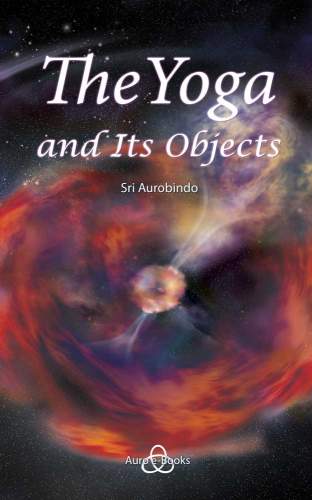The Yoga and its Objects

The Yoga and its Objects
This is a very early essay written by Sri Aurobindo no later than 1912 and it was first published as a booklet in 1921 under the title “The Yoga and Its Object”. In a letter written in 1934, Sri Aurobindo wrote: “But the book represents an early stage of Sri Aurobindo’s sadhana and only a part of it is applicable to the Yoga as it has at present taken form after a lapse of more than twenty years.” However, this should not be construed to mean that the information in this book is useless or somehow outdated. In the very same letter, apparently in reference to Lights on Yoga first published in 1935, Sri Aurobindo went on to say: “A book giving some hints about the Yoga compiled from letters to the sadhaks is about to be published, but it cannot be said to be complete. There is no complete book on the subject; for even The Synthesis of Yoga, published in the Arya but not yet republished in book form, gives only the theory of different components of the Yoga (Knowledge, Works, Devotion) and remains besides unfinished; it does not cover the more recent developments of the Yoga.” Clearly, these comments come from an ever evolving yoga; a yoga which, with Sri Aurobindo, began with a major step forward and moved beyond the stalled, stale practices of the nineteenth century. Perhaps the greatest difficulty of this short essay is the plethora of Sanskrit terms and that has been largely ameliorated with the inclusion of a glossary.
Book Details
Author: Sri Aurobindo
Print Length: 33 pages
Publisher: Sri Aurobindo Ashram
Contributors: Alexey, Mani, Krishna, Blindshiva
Book format: PDF, ePub, Kindle
Language: English
Book Download
Contents
- Publisher’s Note
- The Yoga and Its Objects
- Appendix
- Glossary
Sample
The Yoga and its Objects
The yoga we practice is not for ourselves alone, but for the Divine; its aim is to work out the will of the Divine in the world, to effect a spiritual transformation and to bring down a divine nature and a divine life into the mental, vital and physical nature and life of humanity. Its object is not personal Mukti, although Mukti is a necessary condition of the yoga, but the liberation and transformation of the human being. It is not personal Ananda, but the bringing down of the divine Ananda – Christ’s kingdom of heaven, our Satyayuga – upon the earth. Of mokṣa we have no personal need; for the soul is nityamukta and bondage is an illusion. We play at being bound, we are not really bound. We can be free when God wills; for he, our supreme Self, is the master of the game, and without his grace and permission no soul can leave the game. It is often God’s will in us to take through the mind the bhoga of ignorance, of the dualities, of joy and grief, of pleasure and pain, of virtue and sin, of enjoyment and renunciation: for long ages, in many countries, he never even thinks of the yoga but plays out this play century after century without wearying of it. There is nothing evil in this, nothing which we need condemn or from which we need shrink, – it is God’s play. The wise man is he who recognises this truth and knowing his freedom, yet plays out God’s play, waiting for his command to change the methods of the game.
…
